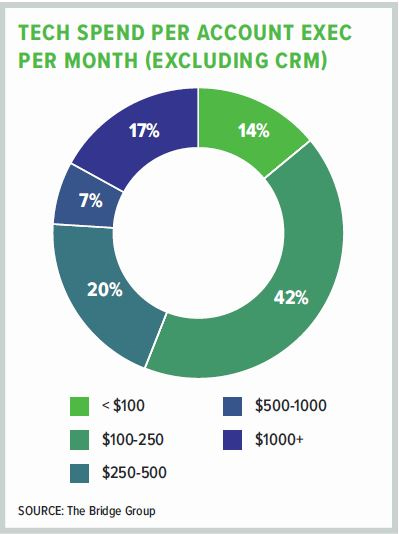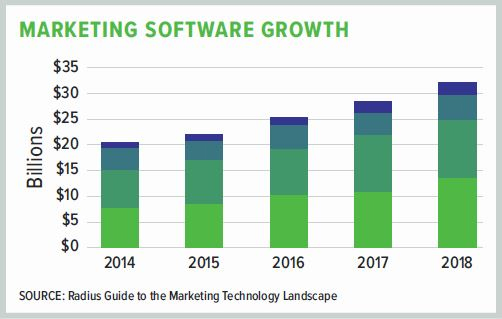Automating Revenue Attribution Between Sales & Marketing Teams
By Adam Becker
Software companies should take a long look at their sales and marketing tech stacks to ensure data is shared seamlessly between teams.
 Every marketing metric falls into one of two categories: push or pull. Does your software business employ one or the other, or both? Let’s break them down. Push marketing is a form of advertising that sends communication to the user. Also known as direct response marketing or general advertising, push marketing targets a specific audience with messages and offers. Email, direct mail, print, and broadcast are prime examples of push marketing. Pull marketing is, as you can imagine, the opposite. This type of marketing “pulls” prospects into your website/product page.
Every marketing metric falls into one of two categories: push or pull. Does your software business employ one or the other, or both? Let’s break them down. Push marketing is a form of advertising that sends communication to the user. Also known as direct response marketing or general advertising, push marketing targets a specific audience with messages and offers. Email, direct mail, print, and broadcast are prime examples of push marketing. Pull marketing is, as you can imagine, the opposite. This type of marketing “pulls” prospects into your website/product page.
Customer acquisition is a team effort. Push marketing (sales) and pull marketing work together to enhance the customer journey. Successful marketers rely on the strength of each approach and often use them together. Push marketing is needed to reach those who may not have heard of your software. It’s also needed for communicating with qualified leads, lapsed customers, and existing customers in order to increase sales. You also need pull marketing to attract those in the buying or research stage who may be searching for your software and to help promote your business as a thought leader.

Companies should be cognizant of keeping consistency throughout sales and marketing materials, from proposals and contracts to emails and every piece of collateral that a potential customer may come in contact with. If you don’t have consistent branding between your sales and marketing teams, you could have negative consequences that can ultimately impact your bottom line. When marketers create content, but salespeople don’t use that content (typically because they like to stick with what’s worked best for them in the past), content goes unused, which is wasted time and money. Using outdated documents with incorrect branding also sheds a negative light on your company to your customers, causing a lack of customer trust and brand awareness.

ATTRIBUTING REVENUE BETWEEN SALES & MARKETING
Mastering sales and marketing alignment has been every company’s Achilles heel at one point or another. Both camps must pursue accounts with a single plan: for outreach, for engagement, and for customizing the buyer journey. As lead generation becomes harder and competition becomes fiercer, marketing and sales must make every effort to work together using both of their skillsets.
The ideal scenario for sales and marketing alignment is a campaign that generates lots of marketing qualified leads, which then go on to convert into opportunities and revenue. Yet despite the best intentions, sales reps can forget to manually enter campaign codes for revenue attribution when tracking opportunities. Account executives deserve accolades for the deals they close, but their counterparts on the marketing team should also get credit for their activities when they contribute to leads and closed revenue.
IDEAL SALES & MARKETING TECH STACKS
Are your marketing automation, sales tracking, and contract management applications integrated by way of APIs to enable real-time data analytics? If your marketing team is focused on creating insightful content assets that compel prospects to connect with sales, your digital workflows should automate lead attribution.
Innovative cloud-based applications for sales and marketing professionals take the burden off the shoulders of your employees to search for specific campaign codes to cite as a lead source. Your sales and marketing applications should:
- Eliminate spreadsheets wherever possible.
- Trigger workflows to alert sales or marketing executives when a deal is closed or when a contract is created related to a high-profile campaign.
- Be mobile friendly, and/or facilitate access for remote employees.
- Support digital signatures, so transactions aren’t delayed by paper shuffling.
- Facilitate a cohesive flow of information from initial contact to quote/proposal to invoice and final payment for revenue recognition.
Take these criteria into consideration when selecting SaaS products to support your needs as your business stands today and as it evolves and grows. You should also keep them in mind when partnering with a professional services provider, as a capable consultant would need to understand how these processes are related.
Don’t hesitate to sketch out your business workflows on a whiteboard. Incorporate an inventory of the tools your teams are already using which may cause bottlenecks or inefficiencies in your sales and marketing organizations. The cost of adopting interoperable applications is likely far less than the price of keeping silos in place and not addressing the issue.
USE CAUTION WHEN ADDING TO YOUR TECH STACK
Adding more apps to a tech stack doesn’t mean salespeople will use them. Research has shown that companies adopting cloud technology still struggle with integration. This leads to companies making major investments in elements of an overall cloud solution that may not work together seamlessly.
Until all of your tech stack works together, it will feel disconnected and ineffective. The best cloud-based tech stacks should push and pull data between apps, feeding each solution with the necessary information to work at full capacity.
Are your marketing campaigns generating leads and opportunities, but without the visibility to track the influence your promotional activities have on forecasted or closed revenue? Are there business process disconnects along the journey from a proposal to a signed contract and invoicing? Take a closer look at the workflow tech stack that was purpose-built to accelerate your sales and marketing teams.
ADAM BECKER is the senior director of sales integration for Conga, which acquired Octiv in 2018. He previously held several roles at ExactTarget, where he saw the company grow from 80 to 1,300+ employees. At ExactTarget he served on the marketing team, optimizing the lead flow process, then migrated to the sales team where he was a market development manager and a team lead.
